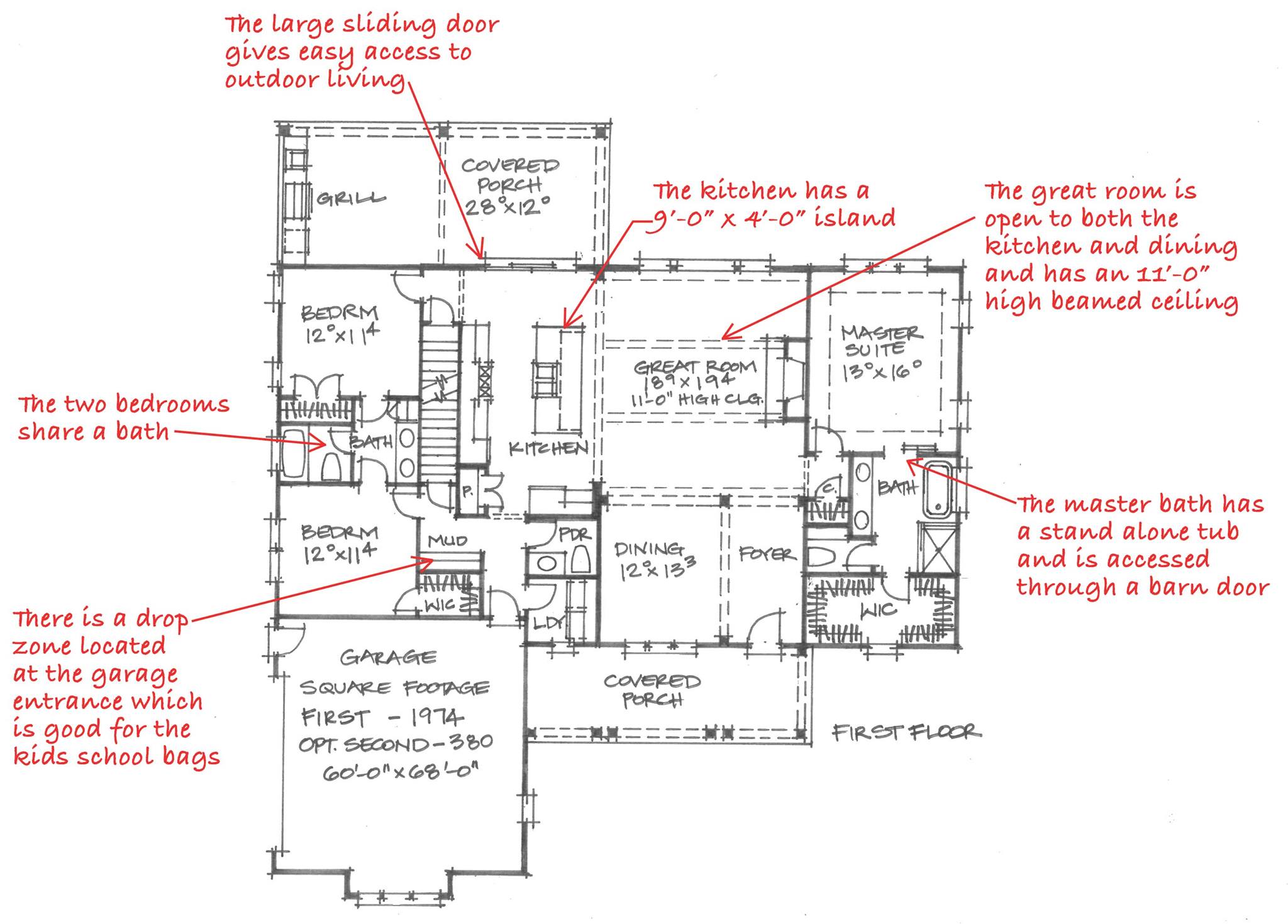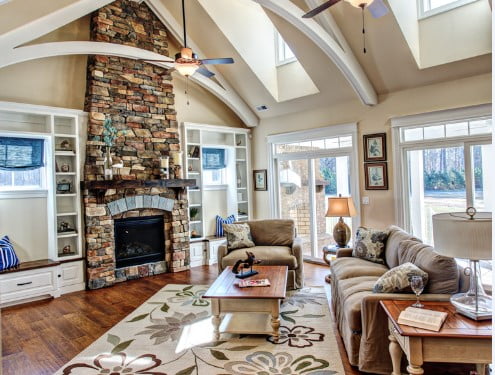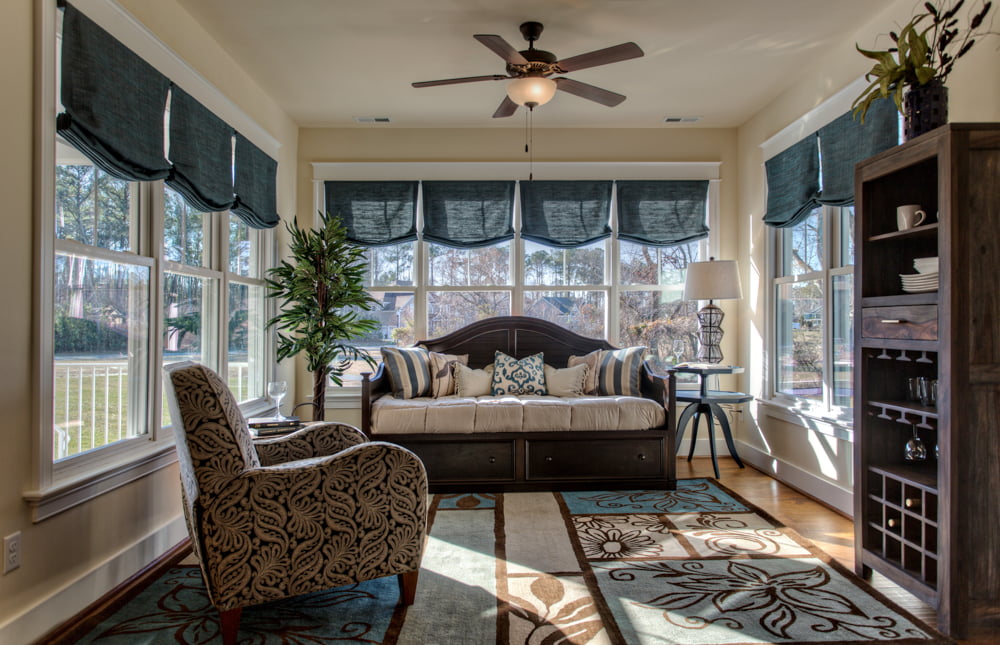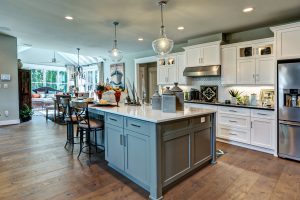The Custom Building Process- 7 Steps on How to Build Your Dream Home
Here are 7 Steps on How to Build Your Dream Home:
1. Selecting Your Homebuilder– Make sure you do some research before you decide on a builder to build your dream home plan. A new home is probably the single biggest investment you’ll make in your life and you’ll be happier if you select the builder that is best suited to help you accomplish your goals.
First, check out a few of the homes the builder is currently building. Inspecting a new home under construction, you’ll be able to see how well the home is framed, how it is insulated, and the type of materials used which make up the “sticks and bricks”.
Research the window quality and the type of HVAC equipment. What is the SEER rating and the brand- is it a “builder grade” unit or a reputable brand that has excellent reviews? Some builders may not invest in everlasting quality materials and products like the subflooring, appliances, fixtures, flooring, roof sheathing (does it have a radiant sheathing barrier that is much more energy efficient?).
Second, make sure you see a home recently completed, and check out their list of testimonials of homebuyers. Most homebuyers want an overall quality product, but excellent customer service rates even higher in buyer surveys.
2. Finding the Right Building Site– Walk the site with your builder or the builder’s representative. Make sure the home you’re building is in an area that you’re comfortable with and complements your home’s value. Are you surrounded by homes of comparable quality and value? Does the building site have the amenities that’s best for your family? How will you enjoy living there? Be sure to make the place you live, the place you love.

3. Choosing the Right Home Plan for Your Family– It’s probably a good idea to walk through a few different floor plans of homes that are in your price range and see how each home fits your needs and wants. You may be surprised to find, that sometimes you don’t know what you really want, until you see it. New home trends are constantly changing, and some of the newer home plans are reflecting the way people live today. If you haven’t visited a new home site in a few years, it may be a good idea to make the on-site visit in person.
If builder is only building from a limited portfolio of plans, it may not be what you’re looking for. You may be best served to find a builder that can customize a home plan for you and design it the way you want it. A builder who builds on a higher production level will often stick to the plans they’re offering in a certain subdivision. A custom builder who’s philosophy is to match the best plan for each customer, may be more willing to help develop a home plan that’s right for you.
Having an architect on staff is a huge differential advantage today. If the builder has an in-house architect, they’re saving you costs in design fees and they’re able to draw their own plans for you. Making changes to existing plans is also much easier and quicker than having to out source the plans. Many custom builders will have a close relationship with a local draftsman who can also assist in making changes to plans in a timely manner.
4. How to Fund the Building Process– Today, most custom builders are recommending to their clients they go through the Construction to Permanent Loan Process, here there’s a one-time closing where the customer obtains the construction loan and it rolls into their permanent mortgage at the end, once the home is completed. The builder is not having to obtain the construction loan and adding the costs of obtaining that loan to their cost to build the home. There’s only one closing involved, and it makes for a smoother overall funding process for the builder and homeowner. Kristen Smith, a loan officer with TowneBank, says, “There’s great advantages to the homebuyer by going through the Construction Loan process…It helps having a lender like TowneBank- we feature an array of innovative products, great rates, and comprehensive local service, every step of the way.”


5. The Selection Process– How to decide which interior finishes are best for your home. (Flooring, Lighting, Appliances, Interior and exterior selections) If you have never been through the custom building process, it’s best to select a builder that has an Interior Designer or a New Home Selections person that helps you through the selection process. It will help narrow down the selection process, and they can help show the latest trends and selections that are most popular. Having one person there on staff to help you through the process helps make the building process go a lot smoother.
6. New Construction Agreement– Make sure the builder’s new construction agreement addresses all of the items that you want included in your new home. It’s important to have a sales contract that addresses all of the building specifications included, the site plan showing the home’s location on the lot, and the floor plan (with all of the changes and modifications you’ve made included). Be sure to understand the builder’s change order policy and the different walk thru’s with the builder’s superintendent during the construction period.
7. New Home Orientation (Final Walk-thru)– It’s important to have a thorough and detailed final walk thru with your builder at the time of the home’s completion and before move-in. It’s a time to understand how your new home works and how to maintain it during the time you own the home. The walk-thru is a time of orientation- it should be an exciting time to celebrate the completion of your beautiful new home. Most builders will review their various warranty items, go over their process for a 30 day punch-list warranty, and their one year warranty program.
If you’d done a good job selecting a highly reputable homebuilder, this will be a rewarding experience, and one that helps make the custom home building process an enjoyable one for all.
By Mark Edwards, REALTOR® /Broker with East West Realty




